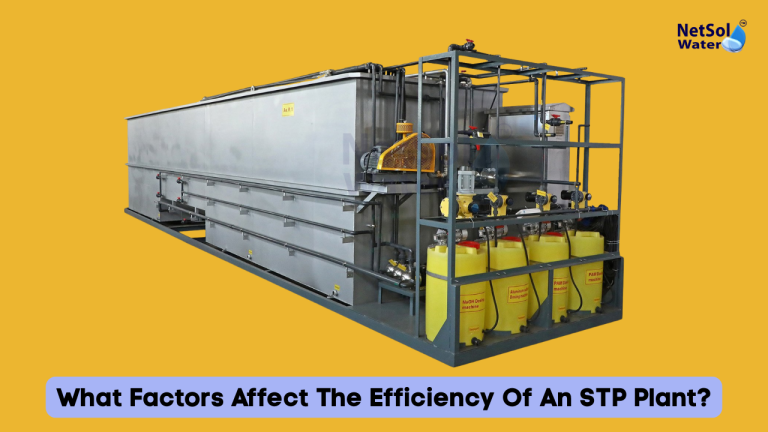
A sewage treatment plant is a big sewage treating facility that treats both sewage & its wastewater while protecting the environment. However, a number of significant factors might cause a wide range in a STP Plant’s efficiency. Knowing the components offered by a commercial RO plant that affect a STP’s effectiveness ensures that the process operates smoothly & generates treated water of superior quality. We will go over the main factors that affect a STP Plant’s performance as well as how to maximize its functionality. In this blog we will discuss the what factors affect the efficiency of an stp plant.
What Is Proper Explanation for the Efficiency in STP Plants?
The ability of a Sewage Treatment Plant to remove contaminants, sediments, & harmful microbes from sewage is known as its efficiency. Clean & hygienic water from a properly functioning STP Plant can be safely released into the environment or applied again for several purposes.
A few factors & conditions might affect this efficiency, thus the plant needs to be checked & serviced on a regular basis.
Important Factors Affect a STP Plant’s Efficiency
1) Influence based Quantity & Quality
The quantities as well as the quality of inflowing sewage (influent) have a major impact on a STP Plant’s efficiency. Chemicals, too much industrial waste, or poisonous materials in the sewage can affect the biological function of the facility. In a comparable way, large fluctuations in sewage flow may overburden the system or result in poor sanitation.
2) Design alongside Capacity of STP Plant
The plant’s size/dimension & ability to handle a certain volume of sewage are also crucial elements in assessing how effective it is. The STP Plant will not be able to adequately treat the water if it is not appropriately scaled or developed in compliance with the wastewater’s properties. To guarantee optimal performance, appropriate plant sizing & technology selection are required.
3) Type of Technology Adopted for Treatment
The performance & suitability of various treatment systems, such as membrane bioreactors, trickling filters, & activated sludge, vary from one another. Poor or outdated technology might reduce the plant’s efficiency.
4) Procedures for Operations & Maintenance
Verification, upkeep, & optimum operation are indispensable. The system may experience issues if filters are not maintained, parts are not changed, or chemicals are not introduced in the proper quantity.
5) Temperature as well as Climate
The temperature existing in a STP plant controls all decomposing activity. The microorganisms that break down organic bio-waste can be prevented by low or extremely high temperatures. Seasonal & climatic variations also have an impact.
6) Chemical Balance in matching with pH Levels
Variations in sewage wastewater pH have an impact on bacteria alongside other microorganisms. Sewage cleaning good microorganisms likes pH of neutral (7) to slightly alkaline (>7). An excessively high pH can reduce the plant’s ability to benefit from biological treatment.
7) Hazardous Materials
For the organisms used to treat wastewater, many of the chemicals, heavy metals, including disinfectants present in sewage are poisonous. The biological population may be impacted & alternatives to treatment may be less successful if the water is excessively poisonous.
8) Regulation imposed on Sludge Handling & Disposal
It is important to handle & dispose of sludge appropriately. If accumulated sludge is not regularly removed, it will affect the treatment process, causing blockage & inefficient operation.
How Can STP Be Made More Efficient?
Understanding the elements that impact a STP’s efficiency allows plant operators to take the following actions:
1) Frequent observation for the purposes of inspection as well as maintenance.
2) Depending on the kind and volume of wastewater, implement the appropriate technique for the subsequent treatment.
3) Adjusting the pH-levels along with temperature differences to get near-to-perfect operating conditions.
4) Workers at the Commercial RO Plant should receive training on how to run the plant effectively.
5) Sludge needs to be disposed of correctly & securely.
6) The importance of monitoring & automated computerization.
Recent STP Plants fabricated at Commercial RO Plant are mostly a result of automation & online monitoring advancements. Sensors & management systems enable the monitoring of several parameters, including temperature, pH, oxygen concentration, & flow rate. Regular Monitoring facilitates early identification of defects & operational improvement through eliminating a few common causes that lower a STP plant’s efficiency.
Conclusion
Many interrelated variables affect how well a STP performs. An STP’s efficiency is influenced by a number of parameters, including ambient conditions, plant design, processing technology, operational procedures, & influent quality. For the facility at Commercial RO Plant to operate accurately & safeguard its surroundings with public health, the factors should be identified & properly regulated. So when we talk about what factors affect the efficiency of an STP plant above mentions all are the factors that affect the efficiency of stp plant.
The operational life of the plant can be extended while treatment standards can always be guaranteed with competent operation, appropriate observation, plus routine maintenance. You can be sure that your STP offers safe-clean water & complies with all legal requirements if you keep all these crucial factors in mind.
